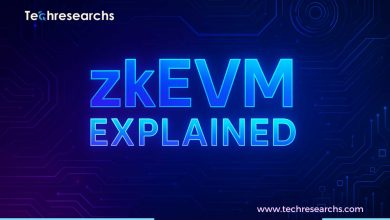Breaking Free: The Rise of Decentralized Social Media

Decentralized social media: For years, we’ve built our online lives within the manicured gardens of social media giants like Facebook and Twitter.
These platforms have connected us, entertained us, and even informed us, but at a cost: our data, our privacy, and our control over our own experiences.
But a revolution is brewing, fuelled by a yearning for autonomy and fuelled by the transformative power of blockchain technology. Enter the world of decentralized social media platforms.
What are Decentralized Social Media Platforms?
Imagine a social media experience where you aren’t just a user, but an owner. A place where your data belongs to you, censorship is near impossible, and algorithms don’t dictate what you see.
That’s the promise of decentralized social media. These platforms operate on distributed networks, often powered by blockchain technology, eliminating the need for a central authority.
Think of it as a peer-to-peer network for sharing thoughts, ideas, and experiences, without the gatekeepers and algorithms that shape our current online interactions.
Why the Buzz?
The appeal of decentralized social media is multifaceted. Here are some of the key drivers:
Ownership and Control: You own your data and have a say in how the platform is governed. No more data breaches or hidden algorithms manipulating your feeds.
Transparency and Censorship Resistance: Open-source code and community moderation make censorship and manipulation far more difficult.
Innovation and Experimentation: Unburdened by corporate interests, decentralized platforms foster a breeding ground for new ideas and features.
Empowering Communities: Users come together to build and shape their own online communities, free from the whims of tech giants.
The Landscape of Decentralized Social Media
The decentralized social media landscape is still nascent but rapidly evolving. Here are some of the leading platforms to watch:
Mastodon: A federated microblogging platform, often described as the “decentralized Twitter.”
Lens Protocol: A decentralized social graph protocol allowing users to own and control their social media data.
Hive Social: A Twitter-like platform with a focus on free speech and user empowerment.
Pixeled: A decentralized photo-sharing platform similar to Instagram.
Challenges and the Road Ahead
While promising, decentralized social media faces its own set of challenges. Scalability, user experience, and mainstream adoption are just some of the hurdles that need to be overcome. But the momentum is undeniable. As people become increasingly aware of the limitations of traditional social media, the appeal of a more open, democratic, and user-centric alternative will only grow.
The Future of Social Connection
The rise of decentralized social media isn’t just about technology; it’s about reclaiming our digital identities and reimagining how we connect online. It’s a chance to build communities based on shared values, not corporate algorithms. The journey may be long, but the potential rewards are vast: a more equitable, empowering, and truly human-cantered online experience.
So, are you ready to step outside the walled gardens and explore the vast, open plains of decentralized social media? The revolution is just beginning, and the power to shape its future lies within our collective hands.
Learn more about Decentralized Social Networking: A Guide to the Future of Platforms
In Conclusion:
Decentralized social media represents a paradigm shift in how we interact online. It’s a movement driven by a desire for ownership, control, and a more meaningful social experience.
While challenges remain, the potential of this emerging landscape is undeniable. As we move forward, it’s crucial to remain informed, engaged, and active participants in shaping the future of social connection.
The seeds of a more just and equitable online world have been sown. Together, we can nurture them into a flourishing reality.



